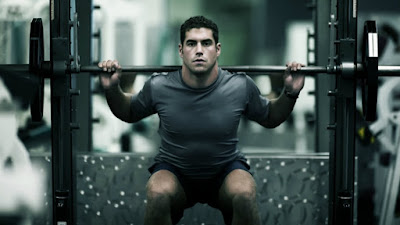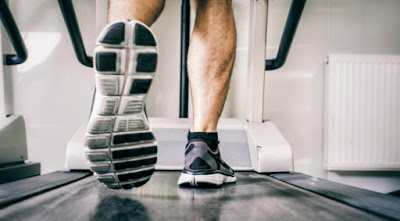Home
»
Bodybuilding
»
fitness
»
Workouts
» THE 3 WORST THINGS TO DO IF YOU WANT TO BUILD STRONGER LEGS
THE 3 WORST THINGS TO DO IF YOU WANT TO BUILD STRONGER LEGS
Posted by: MDox Posted date: 01:35 / comment : 0
If you want strong legs , it goes without saying that you can’t skip leg day. But what if you hit legs religiously every week and you still can’t gain strength in the lower body? Here are five big mistakes people make when trying to achieve strong legs. Make sure you are not doing any of them.
The most obvious reason your legs aren’t strong is that you don’t squat. Now, I understand some people have injuries that don’t allow them to squat, these people get a pass. But if you are healthy and free of injury, get your butt in the squat rack! There is no substitute for barbell back squats. Leg presses, Smith Machine squats, and leg curls all have their place, but the benefits of these exercises pale in comparison to a properly executed squat.
If you are squatting, that’s great. But are you squatting with a full range of motion ? By full squats, I am referring to a below parallel position (hip crease below top of patella). Full squats have been proven to be superior for strength and muscle building when compared to their half squat counterpart.
Are full squats bad for your knees? No, according to the science, they are not. Full squats actually help strengthen the structures of the knee and aid in injury prevention.
Not all cardio is created equal. If you are slogging away for hours jogging or walking on a treadmill you may actually be hurting your strength gains. One study found that combined strength and endurance training can suppress some of the adaptations to strength training. So, how do you get your cardio in without hurting strength gains? The answer lies in high intensity interval . training, or HIIT . HIIT can give you a superior cardiovascular workout while preserving muscle mass and strength.
Nutrition is a very broad topic, much too broad for the scope of this article. So, I am going to focus on one of the most important macronutrients you need to build strength; protein. The guidelines for protein consumption I will lay out are not for the casual exerciser or the normal “Joe Blow” on the streets. These values are for the people who are serious about gaining strength. For the intense strength athlete, at least 1g of protein per pound of bodyweight is needed to facilitate the muscle adaptation process.
When you impose stress on your body your body will adapt and change to better handle that stress in the future. So, if you go in to the gym and do 4 sets of 10 every week with the same weight your body will adapt to that stress. But the whole point of lifting is to continue progressing. That means that once your body adapts to 4 sets of 10 you have to change the stressor. This can be adding more reps, more sets, more weight, or cutting down rest periods.
Nutrition is a very broad topic, much too broad for the scope of this article. So, I am going to focus on one of the most important macronutrients you need to build strength; protein. The guidelines for protein consumption I will lay out are not for the casual exerciser or the normal “Joe Blow” on the streets. These values are for the people who are serious about gaining strength. For the intense strength athlete, at least 1g of protein per pound of bodyweight is needed to facilitate the muscle adaptation process
ggg
About MDox
We are Bodybuildfitness.Com , Provides information and tips on fitness, health, career, relationships, nutrition, recipes, weight-loss and muscle building.
Subscribe to:
Post Comments (Atom)
Popular Posts
-
“Should I have a protein shake after I workout, or before? ” “What about rice? Is rice allowed?” “Is hummus okay t...
-
Whether you're just starting out -- or starting again -- this workout plan will help you drastically improve your physique and fitness...
-
Who on this planet does not know Arnold Schwarzenegger ? Arnold the bodybuilder Arnold the actor or the Governor Arnold! Regarding the bod...
-
Exercising The Liver: An Excellent Guide To Health & Fitness It is a tough job for the liver to keep the cleaning function of the ...
-
Circuit training workouts can be a great way to accelerate the results you get from your training. However, I’m not talking about circui...
-
Ditch the low-fat fakes and choose fatty foods more often for a range of health and physique benefits. Put these 6 high-fat options...
-
Most people would love to maintain their health a little better and one way to do that involves exercising. However, they often at...
-
What is your body type, there are three types There are three types of body : Ectomorph , Mesomorph , Endomorph It is nece...
-
At the beginning of each year most people will set their new year's resolutions. Many people will sign up on new weight ...
-
Every guy wants that classic bodybuilder physique. We all would like bigger muscles and smaller waists, but we don't always go a...















No comments: